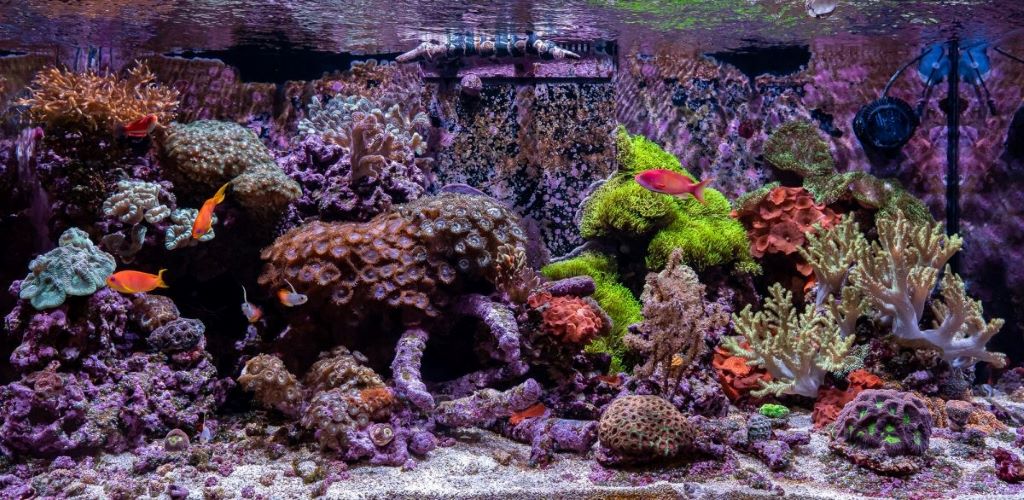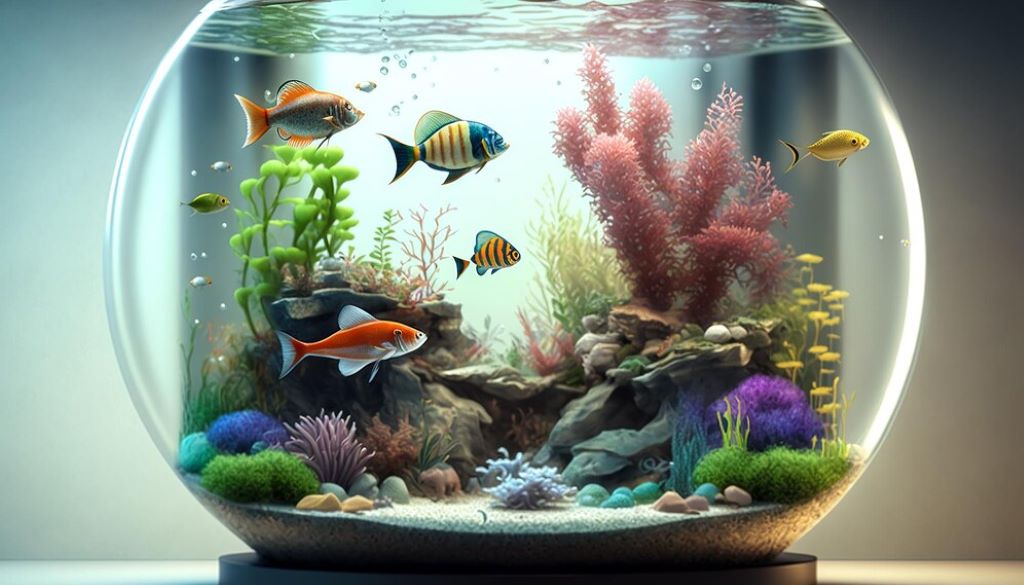Imagine a vibrant coral reef teeming with life, right in your own home. This isn’t a fantasy – it’s the magic of a biotope reef aquarium. Unlike traditional saltwater tanks that often mix species from different regions, a biotope reef focuses on recreating a specific natural marine environment. This approach not only results in a stunningly authentic display, but also fosters a deeper understanding and appreciation for the delicate ecosystems that exist beneath the waves.
A biotope reef aquarium is more than just a collection of beautiful fish and corals. It’s a living, breathing microcosm of a specific geographic location, capturing the unique interplay between its inhabitants. Whether you’re drawn to the bustling reefs of the Indo-Pacific or the serene waters of the Caribbean, it allows you to cultivate a piece of that underwater world in your living room.
The Allure of Biotope Reefs
Why choose a biotope reef over a traditional saltwater aquarium? Here are a few compelling reasons:
- Authenticity: It offers a truly authentic representation of a natural marine habitat. By carefully selecting species that co-exist in the wild, you create a miniature ecosystem that reflects the beauty and complexity of the ocean.
- Educational Value: Building and maintaining a biotope reef is an enriching learning experience. It encourages you to delve into the fascinating world of marine biology, understanding the intricate relationships between different species and their environment.
- Conservation Focus: Biotope reefs promote responsible aquarium keeping by emphasizing the importance of preserving natural habitats. By replicating these environments, you gain a deeper appreciation for the delicate balance of marine ecosystems and the need for their conservation.
- Unique Aesthetic: It offers a unique aesthetic experience. Instead of a hodgepodge of colorful creatures, you create a harmonious display that showcases the natural beauty of a specific region.
Creating Your Own Biotope Reef
Building a biotope reef requires careful planning and research. Here’s a step-by-step guide to get you started:
- Choose Your Biotope: Select a specific geographic location that interests you. Consider factors like water temperature, salinity, and depth. Popular choices include the Caribbean reefs, the Great Barrier Reef, and the Indonesian Coral Triangle.
- Research the Ecosystem: Once you’ve chosen your biotope, delve into its unique characteristics. Learn about the types of corals, fish, and invertebrates that inhabit the region, their symbiotic relationships, and their environmental needs.
- Select Your Inhabitants: Choose species that naturally co-exist in your chosen biotope. Avoid overcrowding the tank and ensure that all inhabitants have compatible temperaments and environmental requirements.
- Aquascape Your Tank: Create a natural-looking aquascape using live rock and sand that mimic the substrate of your chosen biotope. Consider the flow patterns and water movement that are typical of the region.
- Maintain Water Parameters: Regularly monitor and maintain the water parameters to ensure they match the conditions of your chosen biotope. This includes temperature, salinity, pH, and nutrient levels.
- Observe and Adjust: Once your biotope reef is established, observe the interactions between its inhabitants and make adjustments as needed. This may involve tweaking water parameters, adjusting the aquascape, or even adding or removing species.
Popular Biotope Reef Examples

- Caribbean Reef: Characterized by vibrant corals, colorful fish like angelfish and tangs, and invertebrates like crabs and snails.
- Indo-Pacific Reef: Known for its diverse coral species, including Acropora and Montipora, and fish like clownfish, damsels, and wrasses.
- Red Sea Reef: Features unique fish species like anthias and fairy wrasses, and corals adapted to the high salinity and temperature of the region.
- Hawaiian Reef: Home to endemic species like the yellow tang and the Hawaiian cleaner wrasse, as well as diverse coral formations.
Reviews: What Aquarists Are Saying
Biotope reef enthusiasts rave about the unique beauty and educational value of these specialized aquariums. Here are some common sentiments:
- “More Rewarding Than Traditional Reef Tanks”: Many aquarists find biotope reefs more rewarding than traditional setups, as they offer a deeper connection to the natural world and a greater sense of accomplishment.
- “Increased Awareness of Conservation”: Building it often leads to a heightened awareness of marine conservation issues and a desire to protect these fragile ecosystems.
- “Stunning and Unique Aesthetic”: Biotope reefs are praised for their natural beauty and unique aesthetic appeal, which sets them apart from traditional saltwater aquariums.
Frequently Asked Questions (FAQ)
-
What is the main difference between a biotope reef and a traditional reef tank?
A biotope reef focuses on recreating a specific natural marine environment, while a traditional reef tank may include species from various regions.
-
Is a biotope reef more difficult to maintain than a traditional reef tank?
Not necessarily. The maintenance requirements are similar, but a biotope reef requires more research upfront to ensure all species have compatible needs.
-
Can I mix corals and fish from different regions in a biotope reef?
No. The goal of a biotope reef is to replicate a specific natural environment, so only species that co-exist in that region should be included.
-
Where can I find information about specific biotopes?
Online forums, books, and scientific publications are great resources for researching specific biotopes. You can also consult with experienced aquarists or marine biologists.
-
What are some common challenges in maintaining a biotope reef?
Maintaining stable water parameters and ensuring all species have their specific needs met can be challenging. It’s crucial to research thoroughly and monitor the tank closely.
-
Can I add any fish or coral I want to a biotope reef?
No. Only species that naturally occur in the chosen biotope should be added to maintain the authenticity of the ecosystem.
-
Are biotope reefs more expensive than traditional reef tanks?
The cost can vary depending on the chosen biotope and the rarity of the species. However, the initial setup cost may be similar to a traditional reef tank.
-
Can I convert my existing reef tank into a biotope reef?
It may be possible, but it requires careful planning and potentially rehoming any species that don’t belong in the chosen biotope.
-
What are the benefits of a biotope reef for the animals?
It provides a more natural and less stressful environment for the animals, as they are surrounded by species they would naturally interact with.
-
How can I ensure the long-term success of my biotope reef?
Regular maintenance, careful observation, and ongoing research are crucial for the long-term success of it.
Conclusion
A biotope reef aquarium offers a captivating glimpse into the wonders of the ocean, bringing the beauty and complexity of a specific marine environment into your home. By meticulously recreating a natural habitat, you not only create a stunning display but also embark on a journey of learning and appreciation for the delicate balance of life beneath the waves. Whether you’re a seasoned aquarist or a curious beginner, it offers a rewarding and enriching experience that deepens your connection to the natural world.
Read More:
Soft Coral Reef Aquarium: Your Own Slice of the Ocean




